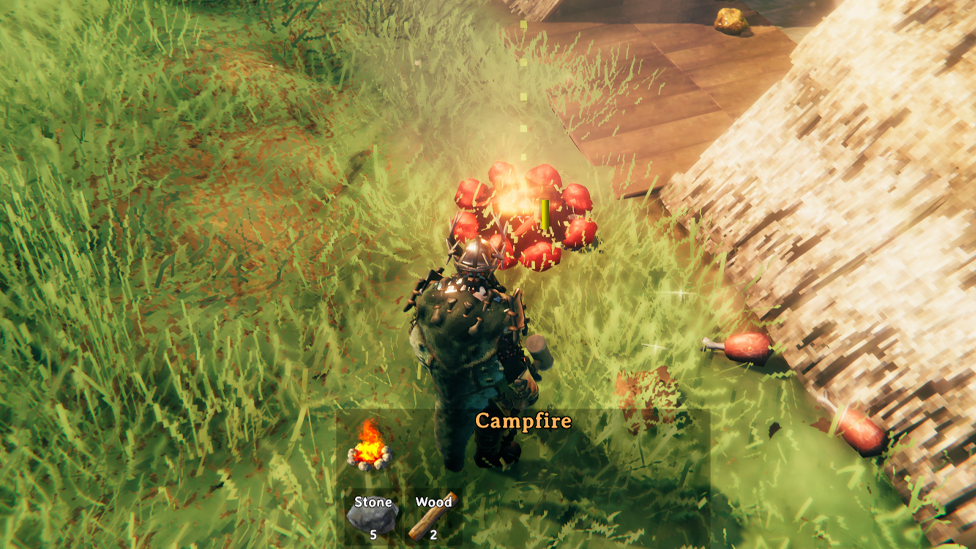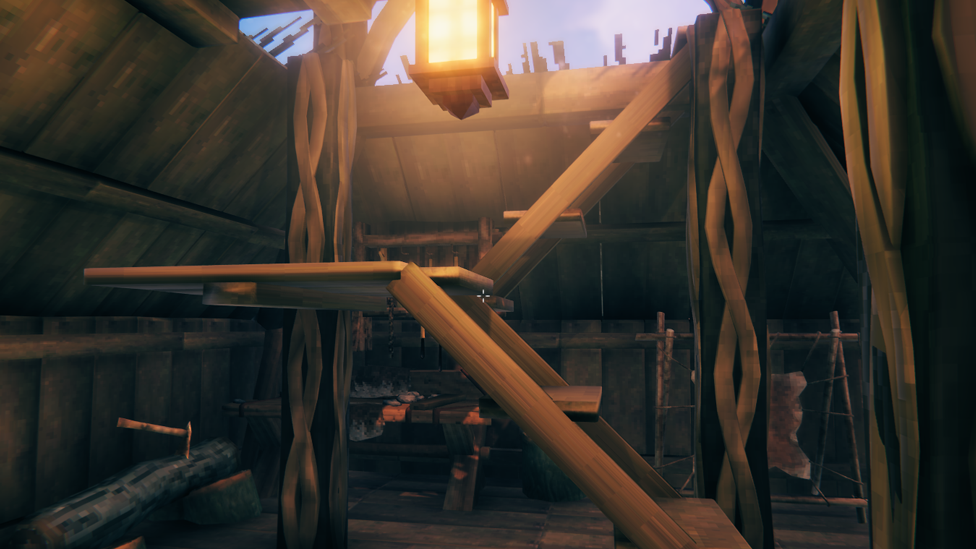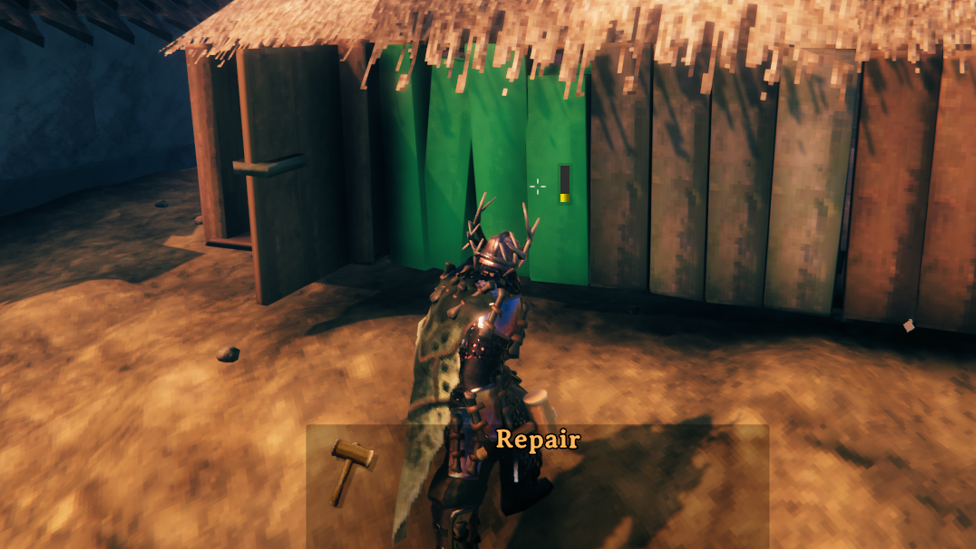How to Build in Valheim
Building in Valheim is a critical survival, creativity, and progression tool in this Viking themed survival game. Learning how to build in Valheim will significantly affect your Valheim gameplay, from building basic shelters, grand mead halls, or even fortified bases. The game’s building mechanics press players to strategize their designs with resource management, structure stability, and aesthetics in mind.
Before you can begin building in Valheim, you need some basic tools, materials, and knowledge of how the building system works. Start by making a hammer that will open up the building menu. You can easily make a hammer with three pieces of wood and two stones, all of which are easily obtainable in the Meadows biome. With this tool, you will be able to access crafting and construction recipes for making different structures like workbenches, walls, and roofs, as well as utility items such as campfires and beds.
Setting Up Your First Shelter

In Valheim, your first goal is to build something functional to protect yourself from enemies, the weather, and the cold. Put a workbench down first, which will cost ten wood. This central building workbench is the place where you build and repair items. But it must be sheltered to work. First, you’ll want to erect walls and put a roof on the bench. Valheim’s snap mechanics mean that walls and other pieces align seamlessly so that they fit together nicely and tight.
An essential feature you’ll want to add is a door for access and a bed to set your spawn point. Beds are useless unless they’re near a campfire. Keep the smoke accumulation in mind; poor ventilation will cause damage over time. A chimney or a well-placed hole in the roof provides proper airflow and helps keep the fire burning down when it rains.
Stability optimization of Terrain
Long-term structures in Valheim need a stable foundation. Uneven Terrain can weaken your base's stability, which is visually represented by colors: Stable is green, and weak is red. With a hoe of wood and stone, you can flatten the ground a bit to give yourself a nice, level building surface. Wooden poles make a great support beam for structures as they provide structural integrity to structures in hilly or watery areas. In time, you can upgrade to stone supports via advanced tools like the Valheim stonecutter.
Expanding Your Base
Expand your Valheim base as your needs grow by adding specialized rooms for storage, crafting, and cooking. Make chest storage areas dedicated spaces and stack chests with wood floor tiles to save space. Also, more advanced crafting stations such as smelters, kilns, and fermenters should be included to process materials and brew potions.
Valheim's roofing system needs special attention so that rain and wind don't get to you. Instead of repurposing floor tiles, use roof tiles to protect you from weather elements. Using tiles in the right manner will make your structure durable and protect the interior from damage.
Advanced Building Techniques

Advanced building in Valheim include multi-level or complex structures such as towers, bridges, and relaxing spaces. The stability of these projects and the resources used for their development must also be carefully observed.
To build multi-story buildings, wooden beams need to be layered, and cross supports are required to maintain the structure. This is even more crucial as each piece contributes to the weight of the structure, deteriorating stability as you get higher. The beams and poles, as a frame, prevent collapse and distribute the load.
To build over water or on uneven ground, build a stable foundation on wooden poles or stone pillars. These supports prevent the weak points in the base from structural degradation. Before laying the foundation, it’s also useful to level the Terrain with a hoe to strengthen the base for vertical expansions.
Lighting in Valheim enhances the functionality and aesthetics of large buildings. Torches, braziers, or sconces placed strategically on pathways and rooms provide a Viking ambiance and light the area. Navigation is, of course, vital, and light sources are necessary, especially in large bases where natural light may not reach all corners.
These techniques are not only functional, making your builds more useful but also more visually appealing and displaying your creativity in the Viking world.
Maintenance and Repairs
Your structures can be weathered and attacked by enemies, and Valheim's in-game time can wear them down as well. If you see that any of the components are damaged, use your hammer to inspect and repair them. They are free of Resource costs, but you need to be near a workbench. Regular maintenance keeps your base intact, preventing unexpected collapses during critical Valheim gameplay moments.

Frequently Asked Questions
Conclusion
Valheim building is a creative, practical adventure. Modest shelters and grand Viking fortresses alike are evidence of your resourcefulness and strategic planning. Through mechanics, terrain manipulation, and investment in a durable design, you can make bases that last forever and improve your Valheim gameplay experience.
Valheim server hosting is reliable, and you won’t have to worry about your server being down when your friends are ready to play. Check out ScalaCube’s customizable plans for your Viking adventures.
Before you can begin building in Valheim, you need some basic tools, materials, and knowledge of how the building system works. Start by making a hammer that will open up the building menu. You can easily make a hammer with three pieces of wood and two stones, all of which are easily obtainable in the Meadows biome. With this tool, you will be able to access crafting and construction recipes for making different structures like workbenches, walls, and roofs, as well as utility items such as campfires and beds.
Setting Up Your First Shelter

Make Your Own Valheim Server
In Valheim, your first goal is to build something functional to protect yourself from enemies, the weather, and the cold. Put a workbench down first, which will cost ten wood. This central building workbench is the place where you build and repair items. But it must be sheltered to work. First, you’ll want to erect walls and put a roof on the bench. Valheim’s snap mechanics mean that walls and other pieces align seamlessly so that they fit together nicely and tight.
An essential feature you’ll want to add is a door for access and a bed to set your spawn point. Beds are useless unless they’re near a campfire. Keep the smoke accumulation in mind; poor ventilation will cause damage over time. A chimney or a well-placed hole in the roof provides proper airflow and helps keep the fire burning down when it rains.
Stability optimization of Terrain
Long-term structures in Valheim need a stable foundation. Uneven Terrain can weaken your base's stability, which is visually represented by colors: Stable is green, and weak is red. With a hoe of wood and stone, you can flatten the ground a bit to give yourself a nice, level building surface. Wooden poles make a great support beam for structures as they provide structural integrity to structures in hilly or watery areas. In time, you can upgrade to stone supports via advanced tools like the Valheim stonecutter.Expanding Your Base
Expand your Valheim base as your needs grow by adding specialized rooms for storage, crafting, and cooking. Make chest storage areas dedicated spaces and stack chests with wood floor tiles to save space. Also, more advanced crafting stations such as smelters, kilns, and fermenters should be included to process materials and brew potions.Valheim's roofing system needs special attention so that rain and wind don't get to you. Instead of repurposing floor tiles, use roof tiles to protect you from weather elements. Using tiles in the right manner will make your structure durable and protect the interior from damage.
Advanced Building Techniques

Advanced building in Valheim include multi-level or complex structures such as towers, bridges, and relaxing spaces. The stability of these projects and the resources used for their development must also be carefully observed.
To build multi-story buildings, wooden beams need to be layered, and cross supports are required to maintain the structure. This is even more crucial as each piece contributes to the weight of the structure, deteriorating stability as you get higher. The beams and poles, as a frame, prevent collapse and distribute the load.
To build over water or on uneven ground, build a stable foundation on wooden poles or stone pillars. These supports prevent the weak points in the base from structural degradation. Before laying the foundation, it’s also useful to level the Terrain with a hoe to strengthen the base for vertical expansions.
Lighting in Valheim enhances the functionality and aesthetics of large buildings. Torches, braziers, or sconces placed strategically on pathways and rooms provide a Viking ambiance and light the area. Navigation is, of course, vital, and light sources are necessary, especially in large bases where natural light may not reach all corners.
These techniques are not only functional, making your builds more useful but also more visually appealing and displaying your creativity in the Viking world.
Maintenance and Repairs
Your structures can be weathered and attacked by enemies, and Valheim's in-game time can wear them down as well. If you see that any of the components are damaged, use your hammer to inspect and repair them. They are free of Resource costs, but you need to be near a workbench. Regular maintenance keeps your base intact, preventing unexpected collapses during critical Valheim gameplay moments.
Frequently Asked Questions
How do I open more Valheim building options?
As you collect new resources and craft advanced tools, building options grow. For example, if you find iron, the stonecutter is unlocked, allowing stone-based constructions.
Why does my structure collapse when building upwards?
With height, structural integrity decreases. If your base is not level, you can reinforce it with wooden beams or put it on a level foundation.
How can I manage smoke from a campfire?
Construct a chimney or make some holes in the roof for the smoke to escape. Make sure the openings are angled to keep rain out.
What is worth focusing on in my first base?
Prioritize essentials like a shelter, a workbench, storage, a bed, and a campfire. A small, efficient base can facilitate early survival.
Conclusion
Valheim building is a creative, practical adventure. Modest shelters and grand Viking fortresses alike are evidence of your resourcefulness and strategic planning. Through mechanics, terrain manipulation, and investment in a durable design, you can make bases that last forever and improve your Valheim gameplay experience.Valheim server hosting is reliable, and you won’t have to worry about your server being down when your friends are ready to play. Check out ScalaCube’s customizable plans for your Viking adventures.
Make Your Own Valheim Server
Copyright 2019-2025 © ScalaCube - All Rights Reserved.